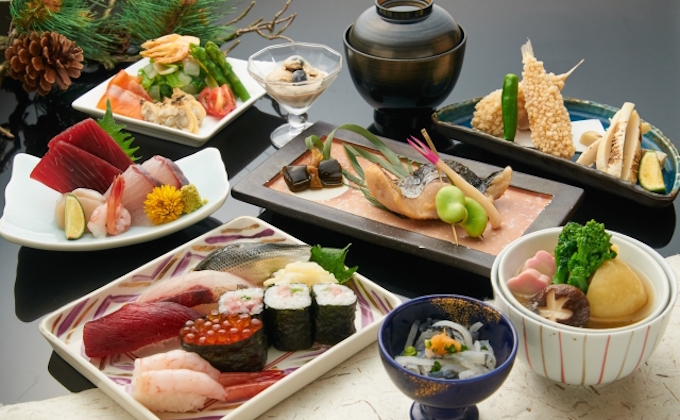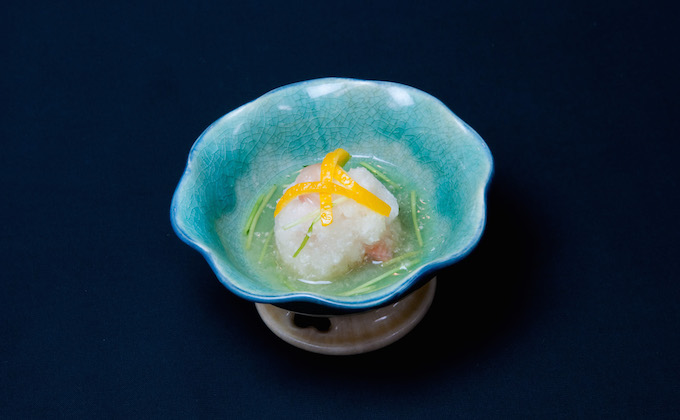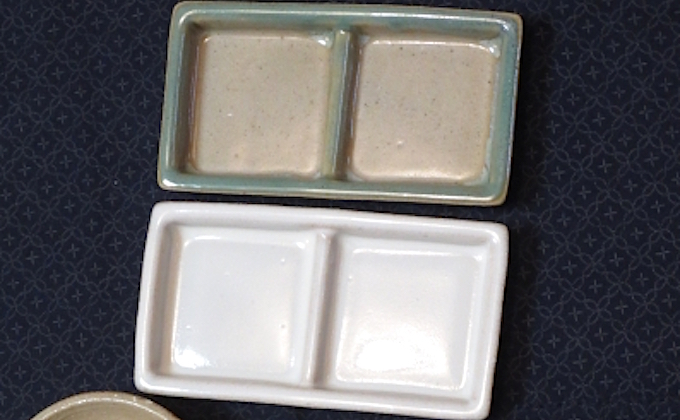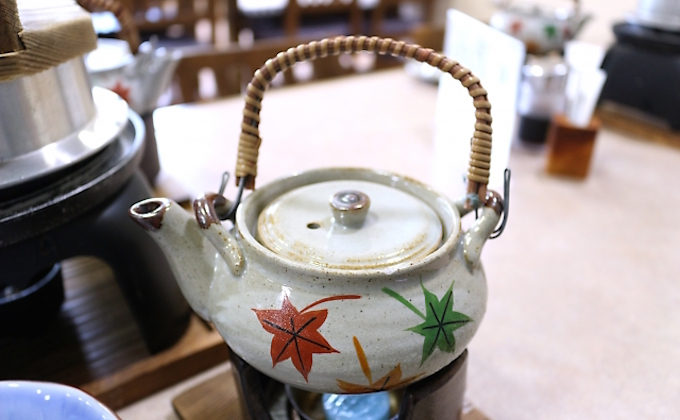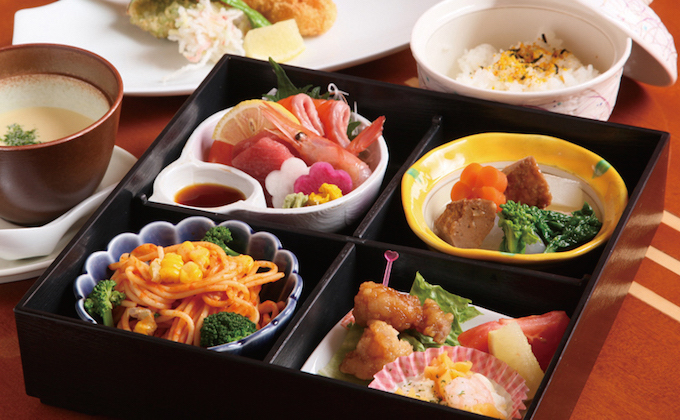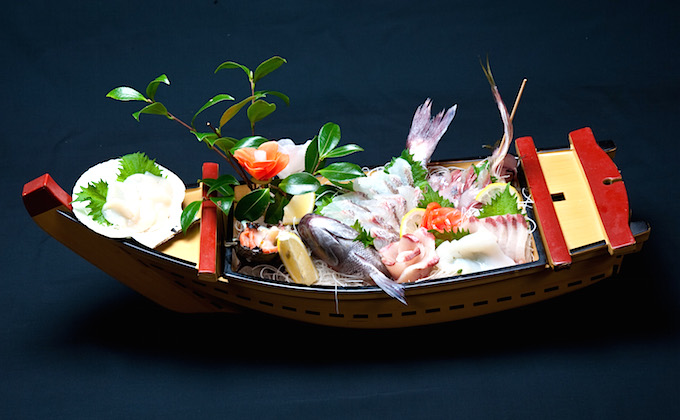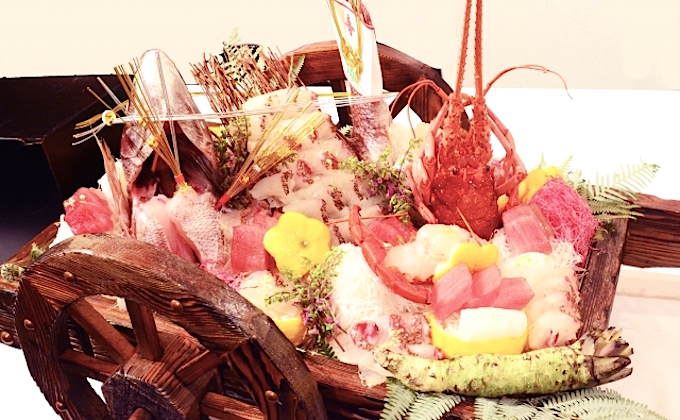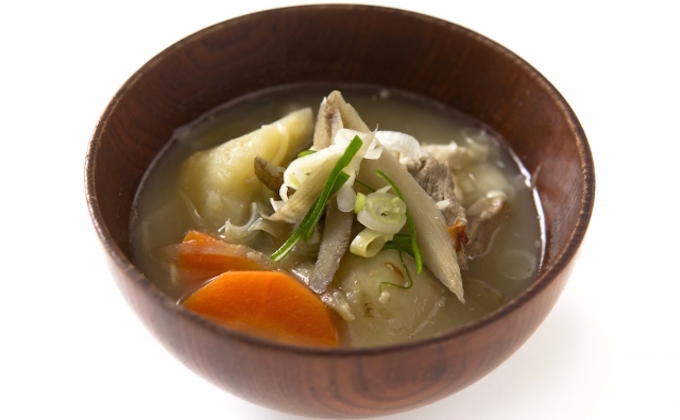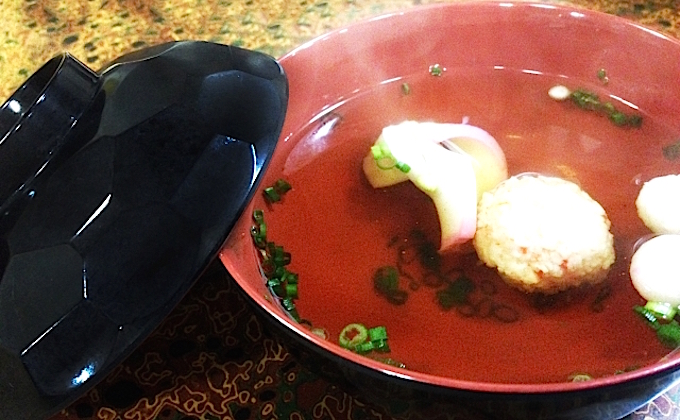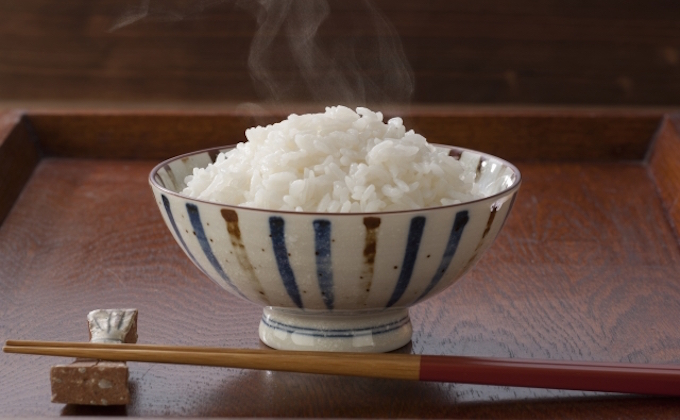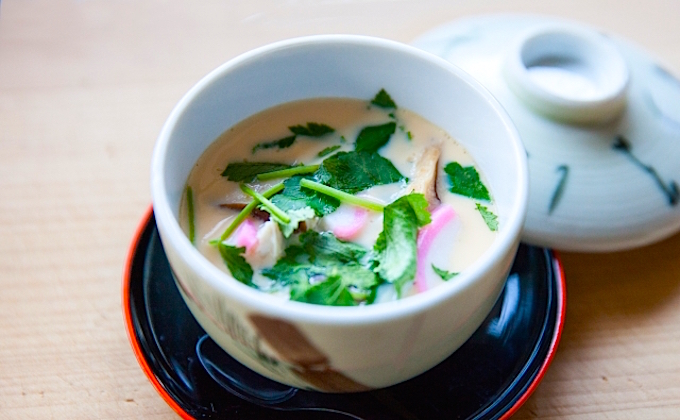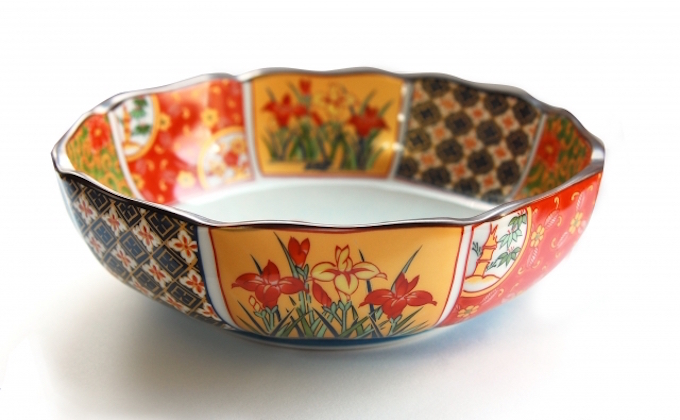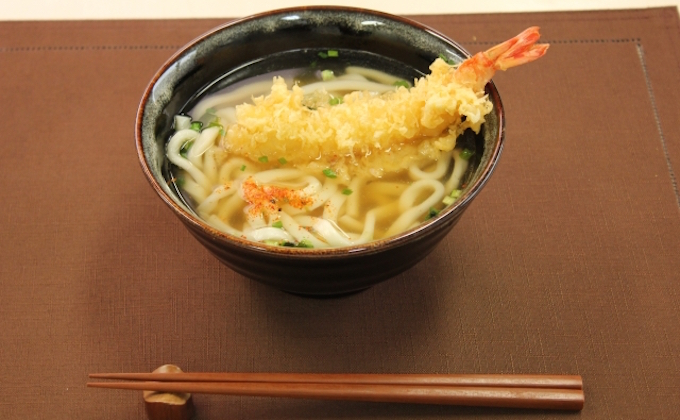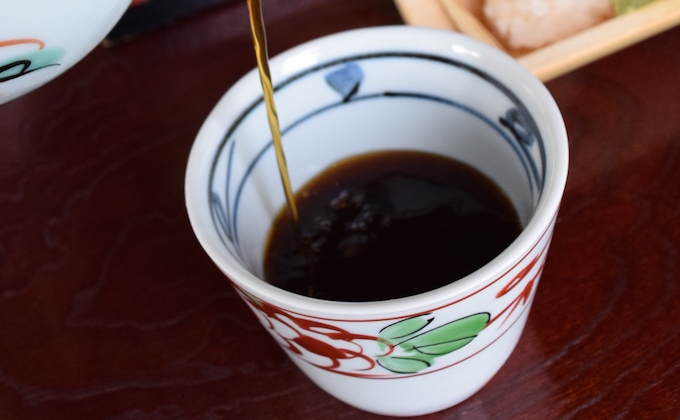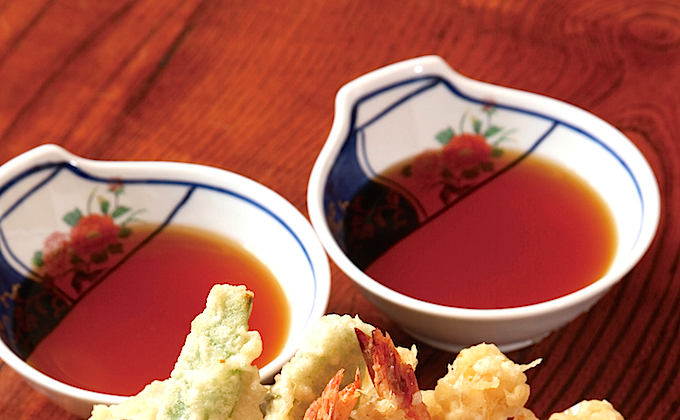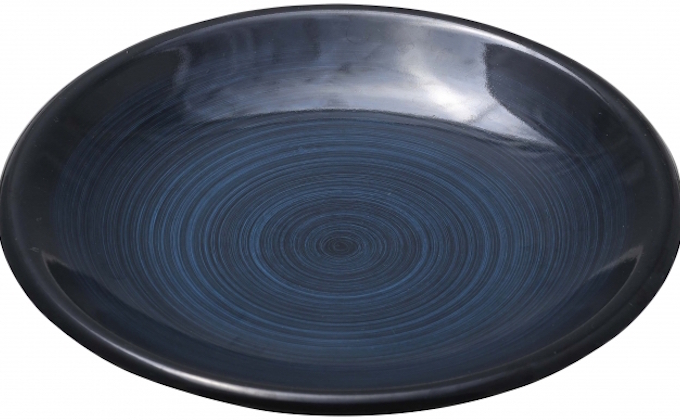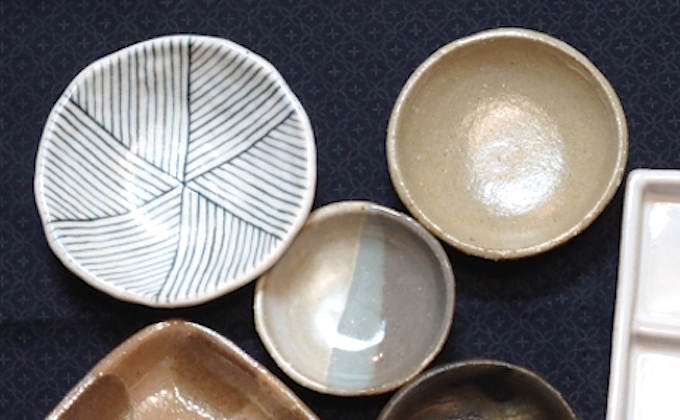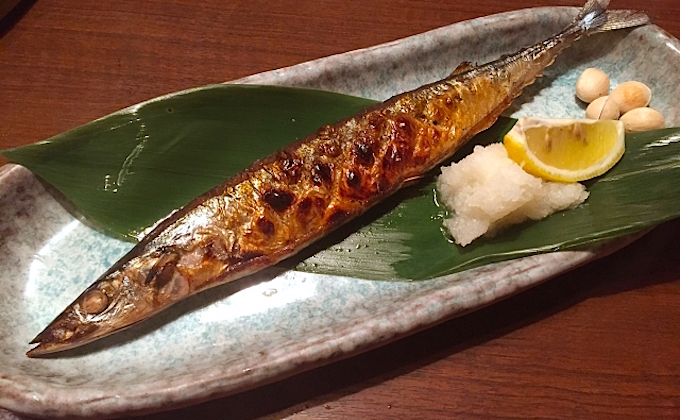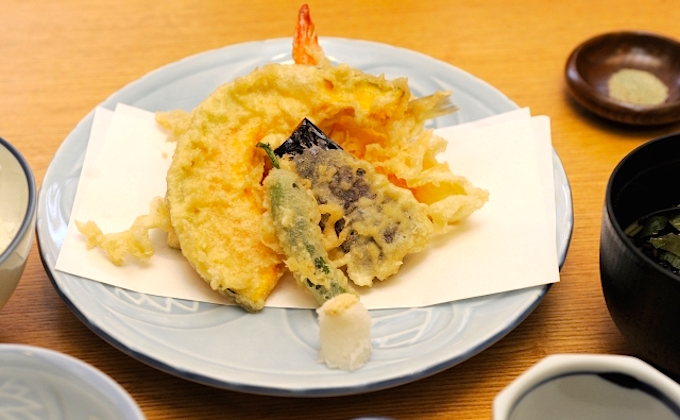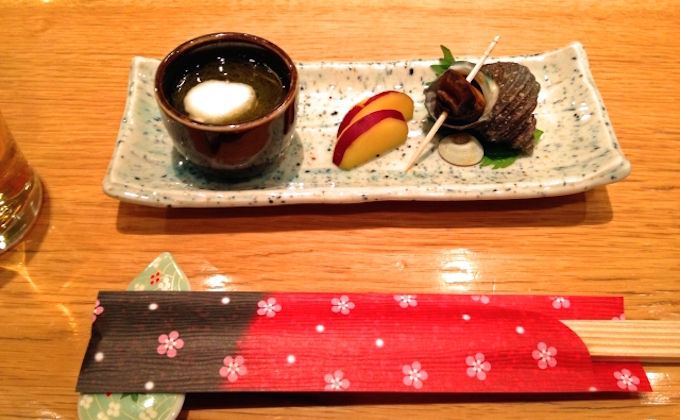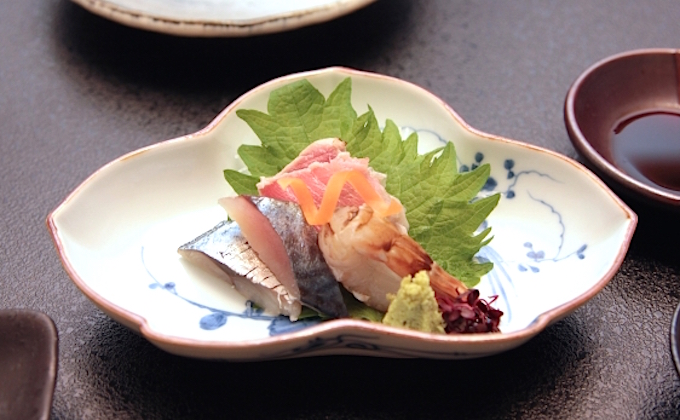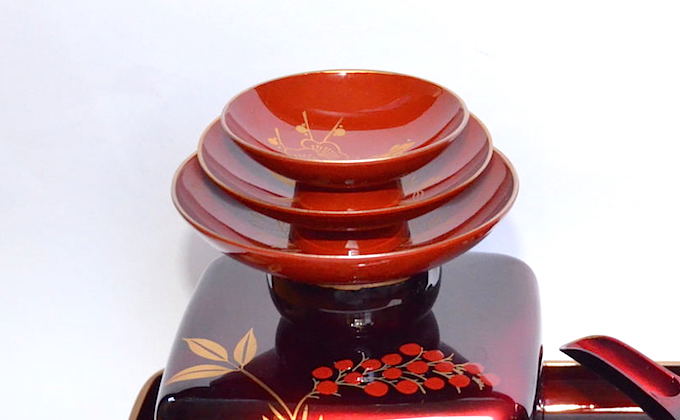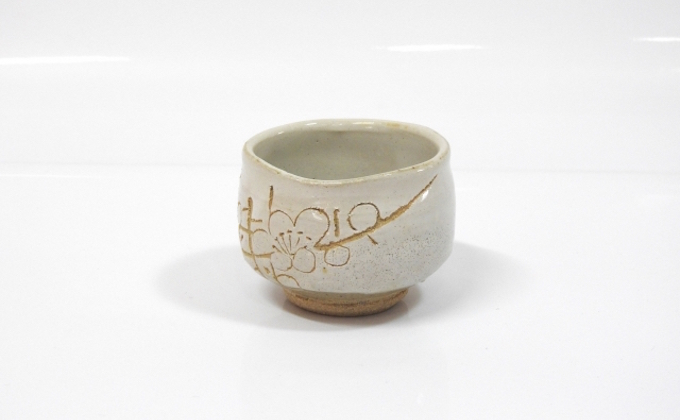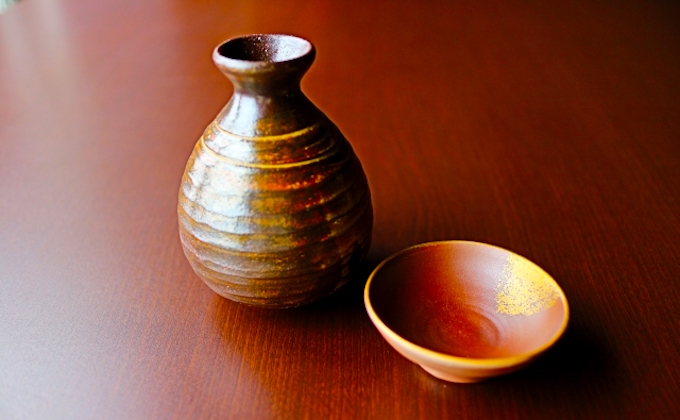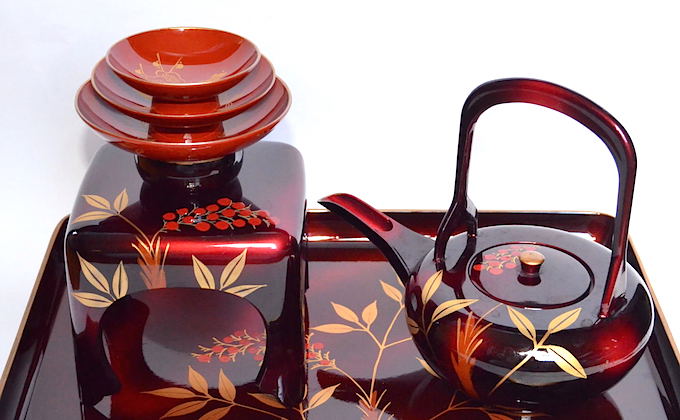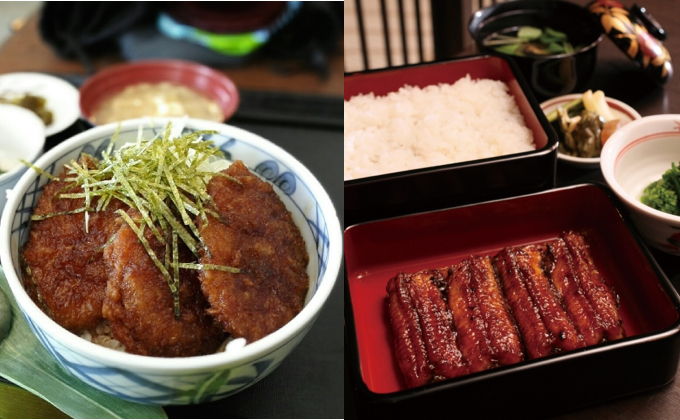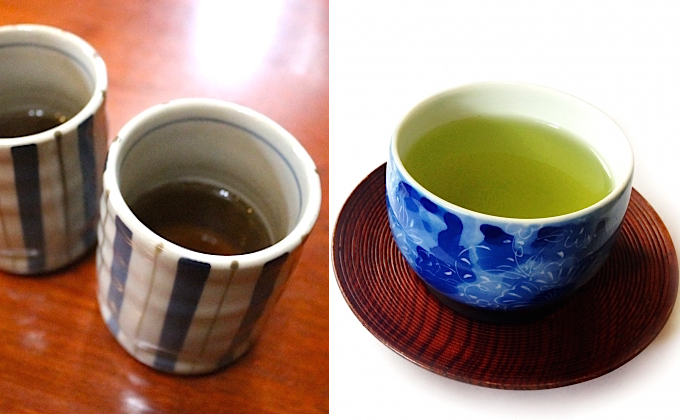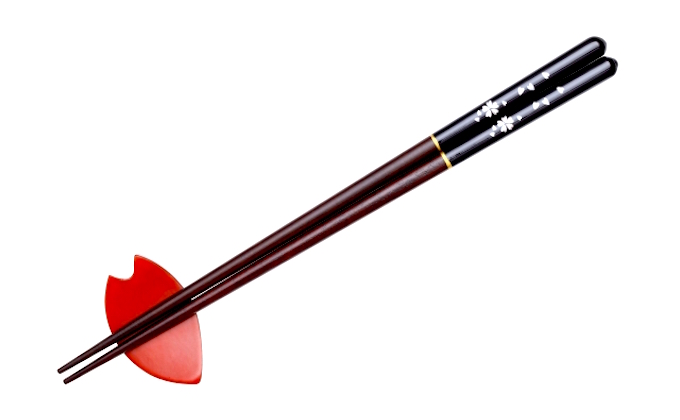TRG Info and Advice
Japanese Tableware
Differences between Japanese and Western Tableware
Japanese tableware is closely related to Japanese food culture. One of the most distinctive features of Japanese food culture is that Japanese people hold the vessels in their hands when they eat. This custom cannot be found in Western countries or even in the neighboring country of Korea.
This practice, unique to Japan, has influenced Japanese tableware to develop in an original way, which cannot be seen in other countries.
What are the main, concrete differences between Western and Japanese tableware?
① Difference in materials
Many Japanese food vessels are earthenware, made from clay, while most Western dishes are made of porcelain, which is a mixture of powdered stone and clay. Since Japanese food vessels are held during meals, earthenware is preferred since it feels warmer than porcelain. They are not only held, but also carried to the mouth, so it is important for them to feel pleasant to the lips, too. Western cuisine, on the other hand, calls for the use of metallic cutlery such as knives and forks, and so porcelain dishes are generally preferred, since they are scratch-resistant.
② Differences in weight and size
Japanese food vessels are smaller, lighter and easier to hold than Western ones.
③ Difference in shape
Since Western dishes are eaten with knives and forks, the main food vessels are low, wide and flat. On the other hand, many Japanese vessels are deep wan or hachi (two types of bowls), because chopsticks are used instead of knives and forks, and many Japanese dishes have a high water content. Dishes served in such bowls would be unsuitable for eating with knives and forks.
④ Difference in collection
Western dishes and plates are usually collected in sets, while Japanese food vessels need not be uniform in size or shape. There are many cases in which family members have their own chawan (rice bowl) and chopsticks.
⑤ Difference in omotenashi hospitality
Have you ever seen a banquet scene at a traditional Japanese inn or hotel on TV? Did you notice dishes being served on individual ozens placed in front of each person, not on the table? An “ozen” is a four-legged tray which is used not only for carrying food but also as a dining table for a single person. Such a scene can be considered an example of omotenashi: the act of making each individual feel special. Nowadays, buffet-style meals and food served on large platters are not unusual in Japan, but this kind of hospitality is originally alien to the traditional Japanese way of omotenashi. It is said that the wide variety of Japanese food vessels are unique to Japan, and this Japanese omotenashi spirit may be one of the reasons for the diversity.
The History of Japanese Tableware
The history of Japanese tableware starts in the Jomon era (ca. 10,000 B.C. – ca. 300 B.C.) and the Yayoi period (ca. 300 B.C. – ca. A.D. 300), when doki (unglazed earthenware) was made. Clay was fired on the ground uncovered, instead of using a kiln, at temperatures of 700 – 900℃.
At first, many Jomon, cord-marked earthen vessels had round bottoms and pointed tips, so that they could be stuck into the fireplace for cooking. By and by, flat bottoms became more common and vessels grew richer in variety.
During the middle of the Jomon era, vessels become increasingly decorative, but in and after the late Jomon era, this tendency subsided and doki became more refined. The final phase of the Jomon period saw the spread of extremely elaborate and artistic earthenware across the eastern half of the Japanese archipelago.
Yayoi doki is more brightly-colored, browner, thinner and harder than Jomon pottery. These differences were brought about by the fact that Jomon ware was fired with the surface exposed, while Yayoi ware was fired with the surface covered in straw or soil. This seems to have helped keep the firing temperature even and led to a better finish than Jomon pottery. Many vessels had simple forms―pots, jars and bowls, and takatsuki (small, one-legged trays used for one person, which were made starting in the middle of the Yayoi era)―and they were mainly used for cooking grains or as storage containers.
It is said that the production of toki (glazed earthenware of a higher-grade) started around the 5th century, when kilns began to be used. Korean potters came to Japan and started producing toki, using potter’s wheels and hole-type kilns. In those days, imitations of Chinese pottery can be found.
In the latter half of the Heian era (794 – 1185), the so-called Middle Ages, the production of sekki (stoneware), which has characteristics of both earthenware and porcelain, picked up steam. Sekki was fired in hole-type kilns at temperatures of 1,100 – 1,250℃. After a while, new, great kilns were introduced, which made mass-production possible.
During the period from the late Heian era to the Azuchi-Momoyama era (1568 – 1600), both the form and production styles of sekki were established. Especially during the Azuchi-Momoyama era, when “Chanoyu” (tea ceremony) was in fashion, earthenware and stoneware with quintessentially Japanese designs were produced.
The incident that triggered the production of porcelain in Japan is thought to be Toyotomi Hideyoshi’s dispatch of troops to Korea (1592 – 1598). It is generally believed that at that time, one of the Korean potters taken captive and brought to Japan spotted a source of porcelain clay in Arita, Kyushu, and shortly thereafter, in the Edo era, Japan’s first porcelain came into production in Arita and Imari (both in Kyushu), and other places.
During this period, the climbing kiln, an improved version of the great kiln, was introduced, and replaced the latter. Since the climbing kiln is divided into many compartments, porcelain can be produced in large quantities.
In the 17th century, trade with the Dutch East India Company flourished, and Japanese porcelain came to be exported to Europe on a massive scale as both Arita ware and Imari ware.
Food Vessels Unique to Japan
Chinmiire
A bowl with a lid for delicacies. Chinmiire come in a variety of shapes, like ones shaped like a rabbit, a bird or a traditional Japanese ball. Of course there are ones without lids, too.
Yakumizara
A small dish for condiments. In addition to round yakumizara, there are also ones with dividers for separating a variety of condiments.
Dobinmushi
A dobinmushi looks like a dobin (earthenware teapot), but it is not. It is a vessel for lightly steaming matsutake mushrooms, whitefish, shrimp, chicken, Japanese chervil, gingko nuts and other ingredients in soup stock. It is called "dobinmushi" because it is in the shape of a dobin. It is served on the table as is.
Shokado Lunch Box
This is a square bento lunch box with a lid, and it usually has a cross-shaped divider in it. Sashimi, a grilled dish, a boiled dish and rice can be arranged beautifully in each section. The name "Shokado" is derived from Shokado Sojo, a priest during the Edo era, who used boxes with four divisions for paint, medicine and tobacco. In the beginning of the Showa era (1926 – 1989), this type of box came to be used as a bento lunch box.
Funamoriki
A funamoriki is a special, boat-shaped centerpiece, which is used for serving raw fish dishes like sashimi and sushi, Japan's representative dishes. Of course, this is not for just one person!
Goshogurumaki
A goshoguruma is an ox carriage, used especially by noblemen in the Heian era. A goshogurumaki is a gorgeous serving vessel in the shape of a goshoguruma, in which sashimi is served on special occasions.
Yotsuwan
This is a set of four lacquered bowls. It is used for a light meal served in Japanese tea ceremony, but it can be handy in ordinary homes, too. The four conveniently nested bowls have the same shape, but each one is one size smaller or larger than another. They can be used for the following typical meal ingredients: a meshiwan (rice bowl), a shiruwan (soup bowl), a nimonowan (boiled dish bowl) and a kozuimonowan (small soup bowl) They can also be used as a rice bowl and a soup bowl with lids if you use two as a rice bowl and a soup bowl, you can use the other two as lids.
Types of Japanese Tableware
1. Wan and Hachi (Bowls)
Shiruwan
A bowl for soup, like misoshiru (miso soup). Lacquerware is generally used so as not to conduct heat to the hand holding the bowl. Since the brim of the bowl is put to the lips when drinking soup, it is shaped so as to make the soup easy to drink. Since the ingredients in the bowl are picked up with chopsticks, its opening is wider than those of a yunomi (Japanese teacup) or a glass.
Suimonowan
A lacquerware bowl for clear soup. Unlike ordinary shiruwan, many suimonowan have lids. They are 10 to 12 centimeters in diameter, and are shallower, with wider openings than an ordinary shiruwan.
Hanki
A hanki is a rice bowl with a lid. There are both earthenware and lacquerware hanki. Some hanki, which are too large for just one person, are used to carry cooked rice. In this case, they are usually called “ohitsu.”
Nimonowan
A bowl for boiled dishes, the main dishes of Japanese cuisine, such as kaiseki tea-ceremony dishes. Nimonowans are about 13 centimeters across. They are large and shallow, and rich in variety. There are both lacquerware and ceramic nimonowan.
Mushiwan
A bowl with a lid for making steamed dishes like chawanmushi (steamed egg custard with assorted ingredients). Many mushiwan are made of heat-resistant porcelain, but there are also earthenware mushiwan. They have various uses, holding a modest amount of clear soup, takiawase (an assortment of separately cooked dishes), iimushi (glutinous rice topped with fish or other food, and steamed) and other dishes.
Hachi
A hachi (bowl) is deeper than a sara (dish or plate) and shallower than a wan (also translated as “bowl”). Unlike a sara, it can be used for serving soup-like dishes, but there is no clear distinction between a deep sara and a flat hachi. A hachi is a food vessel with a wide opening that can be used for many purposes.
Menbachi
A bowl for buckwheat noodles, udon noodles or ramen. A shallow hachi or a deep sara is used for rather dry dishes like yakisoba (fried Chinese noodles). For cold noodles, a hachi made of glass is the most suitable.
Sobachoko
A sobachoko is used as a bowl or cup for dipping sauce when eating soba (buckwheat noodles). It is a versatile vessel which can be used as a yunomi (Japanese teacup), a sake cup, a shiruwan (soup bowl), a mushiwan (bowl for steamed dishes), a dessert bowl, or a bowl for warmed or cold dishes. One of its merits is that sobachoko can be stacked up when put away. A sobachoko is just the right size for storing small items like keys and rings. It seems it is often used as such, overseas.
Tonsui
A tonsui is used for individual helpings of food from the hot pot or as a small bowl for tempura dipping sauce. Many tonsui are uniquely shaped in that they have handles, but there are also some without.
Hirawan
A shallow and flat bowl. It is mainly used for serving nearly dry “takiawase” (an assortment of separately cooked dishes). A hirawan is sometimes used for grilled or deep-fried dishes, too, using a kaishiki (leaf or paper placed under the food). A hirawan is about 17 centimeters in diameter.
Hirabachi
This flat bowl is very convenient in any home. Its rather shallow bottom and wide opening makes it convenient for all kinds of dishes. It can be said that a hirabachi has merits of both a hachi and a sara.
2. Sara (Dish or Plate)
Sara
A shallow and flat vessel. “Sara” is a Japanese word for “dish” or “plate.” Many sara are round-shaped, but they also come in a variety of shapes like square, or long and narrow. The rim is usually more or less higher than the center, so that it is convenient for holding food.
Teshiozara
A small plate with a diameter of 6 centimeters or so. It is used for holding soy sauce or other sauces, or condiments, when eating sashimi, gyoza dumplings, steamed meat dumplings or other dishes. It was originally a dish for teshio (salt for driving off impurity from the table or as extra seasoning).
Yakizara
A yakizara is used not only for grilled fish, but also for tempura and other deep-fried dishes (where the sara is usually covered with a sheet of cooking paper). Many yakizara are rectangular, but there are also round ones, and their shapes are rich in variety. There are special yakizara, such as ayuzara (sweetfish plate) and sanma-zara (saury plate), with shapes made to fit specific kinds of fish.
Tenzara
A dish for serving tempura. Tenzara have various shapes―from round to quadrangular, even octagonal ones. Many tenzara come in sets with tonsui.
Tsukidashizara
A dish for tsukidashi or otooshi (a small appetizer) served at the very beginning of course meals. Many tsukudashizara are long and narrow, about 24 to 35 centimeters long.
Mukozuke
The word “mukozuke” refers to dishes placed on the far side of the serving table. It also refers to the vessel in which mukozuke are served. Bowls or deep dishes of 16 centimeters or so across, are used as mukozuke. They come in all kinds of shapes. In many cases, namasu (raw fish and vegetables seasoned in vinegar) or sashimi are served in them.
Hassunzara
A dish for serving several kinds of appetizers-like tidbits for alcoholic drinks. “Hassunzara” originally referred to a cedar tray of hassun, (a measurement of eight sun, about 24cm square). Nowadays, however, irrespective of the size, hassunzara have various shapes. They are used for dishing up assorted appetizers which are served as part of kaiseki tea-ceremony dishes.
3. Shuki (Sake Holder or Cup)
Sakazuki
A small vessel for drinking Japanese sake. Generally, it has a wide opening and a round base, and is hollow in the center like a dish. A choko is sometimes called a sakazuki. It is about 6 centimeters across.
Choko and Guinomi
Both choko and guinomi are small cups for drinking Japanese sake. There is little difference between a choko and a guinomi. It is generally thought that a guinomi is a large-sized choko. A vessel for dipping soba sauce is also referred to as a choko.
Tokkuri
A tokkuri is a bottle with a bulging body part and a thin neck, which is used for warming and pouring Japanese sake. It is mainly made of earthenware, but a variety of materials, from glass to metal, are used. There are large tokkuri with a capacity of 1,800ml, which are used for carrying sake, but the main ones can hold only 180ml or 360ml. Most tokkuri come in sets with “guinomi.”
Choshi
Originally, a choshi refers to a dobin teapot-like a sake holder with a handle and a spout, but nowadays a tokkuri is sometimes called a choshi.
4. Others
Donburi and Juu
A donburi (left) is a large, deep earthenware or porcelain bowl. It is also called a donburi-bachi, and is a kind of hachi. “Juu” (right) is short for “juubako,” and refers to a lacquer box with a lid. (In many cases, “jubako” refers to multi-tiered lacquer boxes.) Both donburi and juu are used for serving rice topped with tempura, grilled eel or pork cutlets.
Donabe
A hot pot dish is either prepared at the table or brought to the table in the pot in which it has been cooked. A donabe (earthen pot) is often used, and it plays the part of a large dish or a large bowl. The food in the pot is self-service, with individuals adding ponzu sauce or other kinds of sauce to their own small hachi bowls.
Kyusu and Dobin
Both kyusu and dobin are used for pouring green tea. “Kyusu” (left) refers to a teapot with a sticklike handle beside a spout. “Dobin” (right) refers to a teapot with a ring-like handle over it.
Temotobashi and Toribashi
“Temotobashi” refers to personal chopsticks placed close at hand. They are sometimes called “otemoto.” “Toribashi” refers to common chopsticks used to take food from serving dishes or bowls. It is considered rude at formal Japanese dinners to take food from a platter with temotobashi, not with toribashi.






